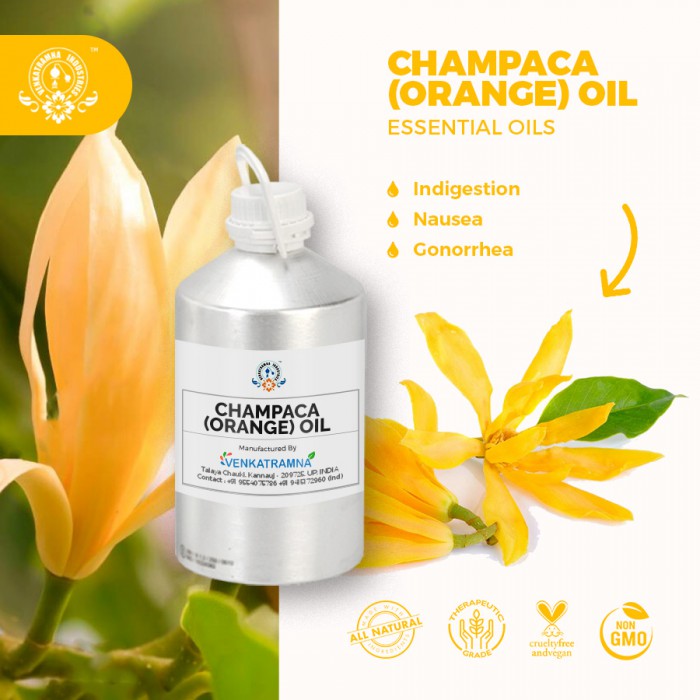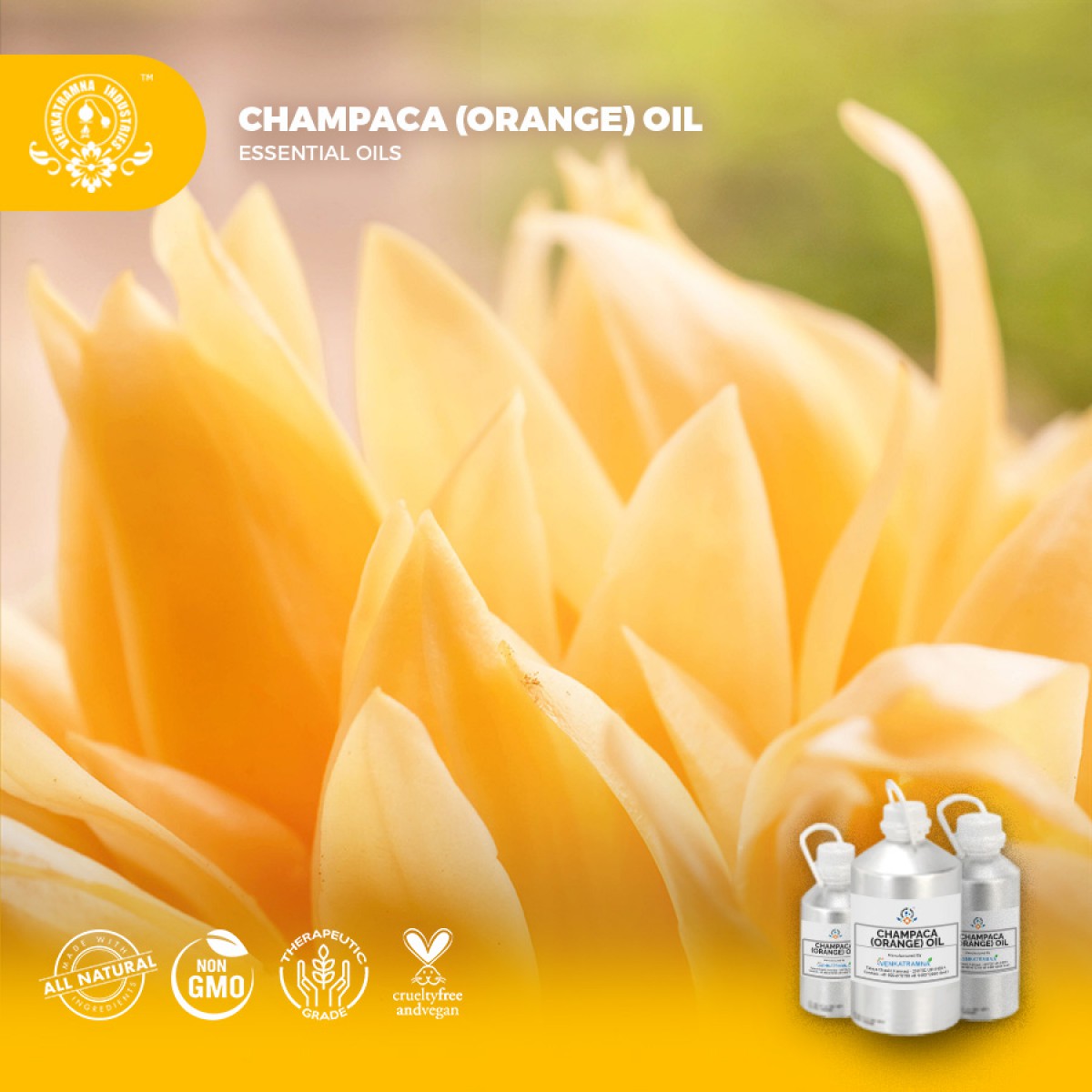Botanical Name : Michelia champaca L. Common name: Golden Champa, champak Read More
|
Botanical Name : |
Michelia champaca L. |
|
Common
name: |
Golden Champa, champak |
|
Plant family: |
Magnoliaceae |
|
Genus: |
Michelia |
|
Appearance/Color: |
Reddish brown transparent liquid and unique and appealing
fragrance. |
|
Odor: |
Rich, velvety, suave, vanilla-sweet floral with warm, dense,
peach/apricot-like notes and spicy tea- and
hay-like under stones; the rich, sweet floral and tea/hay notes remain
in the long dry down. |
|
Blends With: |
Agarwood, black pepper, carnation, cedarwood (Atlas),
cardmom, clove bud, coriander, galbanum, jasmine, lime, mandarin, neroli,
orange, orange blossom, orris, rose, sandalwood, vanilla, violet leaf,
ylang-ylang. |
|
Origin |
India |
Michelia champaca L.
(Magnoliaceae) commonly known as Champa wild in the eastern sub-Himalayan tract
and lower hills up to 3,000 ft. and found in Assam, Burma, South India. The
plant is a handsome, evergreen shrub. Leaves 15- 25 by 5-9 cm., lanceolate,
acute, entire, glabrous; petioles 18-25mm long. Flowers about 5-6.2 cm.
diameter, very fragrant, greyish yellow pubescent. Sepals and petals 15 or more
deep yellow or orange. Grey or brownish bark. Seeds 1-12, brown, polished,
variously angled, rounded on the back.
It is native to the Philippines and the Indonesian islands, now also grows in place far west of its origin-India, southeast china, reunion, and Madagascar; the flowers are a beautiful deep orange-yellow borne on a medium-sized slender tree related to the magnolias. 4 in many areas where it thrives, the flowers are used for ornamental purposes and for worship in temples. It is a woody tree species, which has high economic value as basic material for medicinal and fragrance products. Flowers in general, and champaca, benefits from CO2 extraction for an important reason; numerous monoterpene hydrocarbons detected in the essential oil are not found in the CO2 extract and appear as artifacts or decomposition products during distillation. The CO2 extract of champaca is free of solvent residue, contains far less waxes, is chemically superior to a distillate, and has a closer fragrance profile to the fresh flowers.
DISCLAIMER
The complete range of conditions
or methods of use are beyond our control therefore we do not assume any
responsibility and expressly disclaim any liability for any use of this
product. Information contained herein is believed to be true and accurate however,
all statements or suggestions are made without warranty, expressed or implied,
regarding accuracy of the information, the hazards connected with the use of
the material or the results to be obtained from the use thereof. Compliance
with all applicable federal, state, and local laws and local regulations
remains the responsibility of the user.
The FDA has not evaluated the
statements on this website. No claims are made by Venkatramna Industries as to
the medicinal value of any products from vriaroma.com or by us. The information
presented here is for educating our customers about the traditional uses of
essential oils and is not intended to diagnose, treat, cure, or prevent any
disease. You are responsible for understanding the safe application of these products.
If you have any questions, please call or email us for further information.
As per NAHA guidelines, New Directions Aromatics
(NDA) does not recommend the ingestion of essential oils. It is imperative to
consult a medical practitioner before using Essential Oils for therapeutic
purposes. Pregnant and nursing women and those taking prescription drugs are
especially advised not to use this product without the medical advice of a
physician. The oil should always be stored in an area that is inaccessible to
children, especially those under the age of 7.
Michelia champaca L. is a
medicinal and ornamental plant cultivated in home gardens and near temples for
its scented, attractive and massive pale colored flowers. Besides, being an
ornamental plant, its various parts are medicinally used in the treatment of
different human ailments.
Champaca Essential Oil in
Pharma
The plant is traditionally used
for the treatment of fever, colic, leprosy and for curing cough and rheumatism.
Bark is stimulant, diuretic and used in fever as febrifuge. Root bark is
purgative and emmenagogue used in amenorrhoea. Swarn champa contain various
phytochemicals like alkaloids, terpenoids, flavonoids, tannins, steroids,
carbohydrates. Pharmacological activities like anti-microbial, anti-oxidant,
anti-diabetic, anti-ulcer activities are found to have in this precious plant.
Essence of Champaca Essential
Oil
The essential oil obtained from
the flowers has useful application in perfumery and pharmaceutical industries. Champak is a well-known tree due to
its highly fragrant flowers. Champak floral scent is attributed to a complex
mix of volatile organic compounds (VOCs). These aromatic flowers are widely
used in flavors and fragrances industry.
COMMON USAGE
·
Indigestion
·
Fever
·
Nausea
·
Gonorrhea
·
Headache
·
Gout
·
Rheumatism
Ingredients:
|
S.No |
Key Constituents |
Strength (%) |
|
1 |
2-Phenylethanol |
25.0-34.0 |
|
2 |
Methyl linoleate |
10.0-18.0 |
|
3 |
Indole |
2.9-12.0 |
|
4 |
Methyl anthranilate |
2.1-9.0 |
|
5 |
Methyl benzoate |
1.0-5.0 |
|
6 |
Phenylacetonitrile |
1.2-4.3 |
|
7 |
Benzyl acetate |
0.1-4.0 |
|
8 |
b-lonone |
0.2-3.4 |
|
9 |
Methyl palmitate |
2.0-3.0 |
|
10 |
Lonone oximes |
0-3.0 |
|
11 |
(Z)-linalool oxide (pyranoid) |
0.2-2.5 |
|
12 |
2-phenylethyl acetate |
0.4-2.0 |
|
13 |
Benzyl alcohol |
0.3-2.0 |
|
14 |
Linalool |
0.2-2.0 |
|
15 |
a-farnesene |
0.6-1.6 |
|
16 |
a-lonone |
0.1-1.6 |
|
17 |
Dihydro-b-ionone |
0.3-1.4 |
|
18 |
Dihydro-b-ionol |
0.3-1.1 |
|
19 |
phenylaldoxime |
0.5-1.0 |
TOXICOLOGICAL
INFORMATION
Safety Summary
·
Hazardous Not Known
·
Contraindications Not Known
·
Maximum daily oral dose in pregnancy and
breastfeeding 555 mg
·
Maximum dermal use level in pregnancy and
breastfeeding 17.5%
Organ Specific Effects
·
Adverse skin reactions: No information
found 2-phenylethanol is a very low risk skin sensitizer.
Systemic Effects
·
Acute toxicity: No information found.
·
Carcinogenic/anticarcinogenic potential: No
information found for orange champaca absolute, but it contains no known
carcinogens.
·
Serious eye damage/irritation: May be irritating
to eyes. Prompt rinsing and removal of the substance will avoid damage.
·
Respiratory sensitization: Breathing high concentrations
of vapor may cause anesthetic effects.
·
Germ cell mutagenicity: Not specified
·
Reproductive toxicity: Not specified
·
STOT-single exposure: Not specified
·
STOT-related exposure: Not specified
·
Aspiration hazard: Not specified
ECOLOGICAL INFORMATION
·
Toxicity
o
Acute fish toxicity: LC50 / 96 HOUR – No data
available
o
Toxicity to aquatic plants – No data available
o
Toxicity to microorganisms – No data available
o
Toxicity threshold – No data available
·
Persistence and degradability Biodegradation is
expected
·
Bio-accumulative potential Bioaccumulation is
unlikely
·
Mobility in soil: Unknown
·
Avoid exposure to marine environments and
waterways





 PS-Champaca_Orange.pdf
PS-Champaca_Orange.pdf




